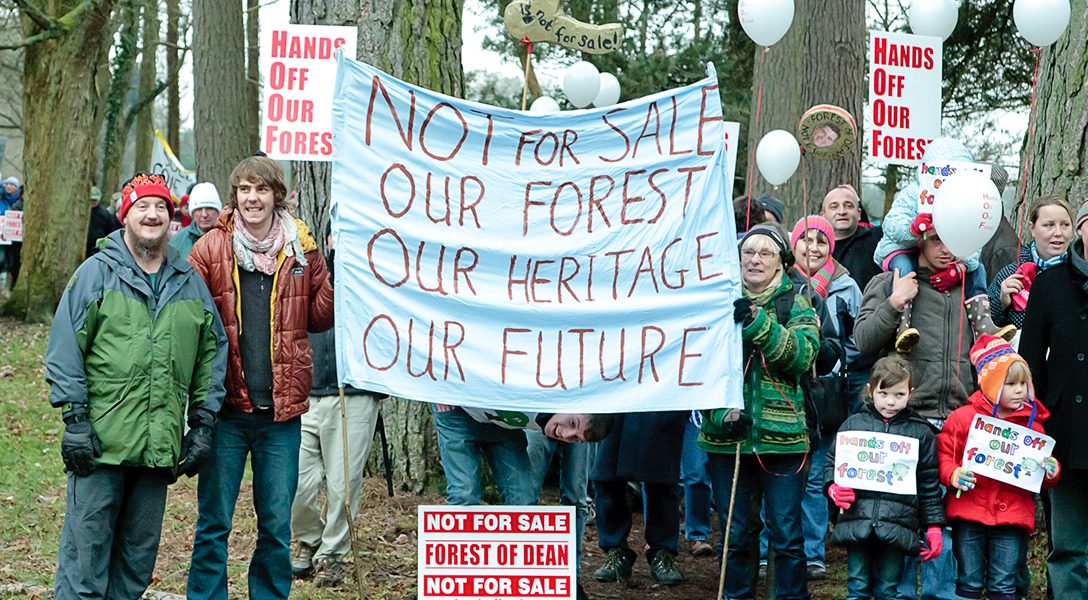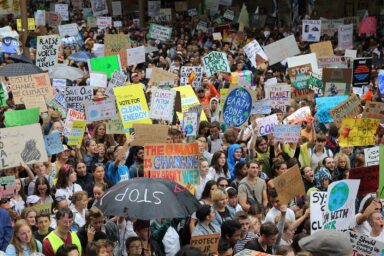If a Protest Happens in the Forest Will Anyone Know?
How to get news organizations to use your protest photographs
The election of Donald Trump has spawned a new protest movement in the United States. Modern technology now allows participants in marches and rallies to document their experience and share it with others.
Many people do so on their own social media accounts. However, there are ways of making images available to a much wider audience, thereby expanding coverage to local and even national news media. Here is how:
Publish Your Event Photos Under Creative Commons
How you publish your protest photos will determine if photo editors feel comfortable using your work. Protests, demonstrations, rallies, campaigns for change, boycotts, strikes and other acts of political resistance are happening everyday. Participants, organizers and spectators are taking millions of photos at these events. Many of these photos are posted to social media, but only a small number are published with a license that permits others to reuse the work. Sharing your work on Facebook, Twitter and other social platforms does not give publishers permission to freely reuse your work. If you care about publicizing the event you have documented and you are not trying to earn money from your photography, you should publish photos under a Creative Commons license. Creative Commons allows creators to choose a license they are comfortable with that gives permission for photos, images and videos to be reused and sometimes remixed.
When news websites and publications write about your event, the chances are they will not have had a photographer on the scene. So how will your event be represented? If the publication is well funded, they may have a subscription to a news photo service and perhaps a photo of your event will be available. It is more likely that news stories about your event will not include a photo or will include some generic image, if your event is covered at all.
Help People Find Your Images and Videos
If you care about publicizing your event, then you want to make sure people can find your images. The easiest way to help people discover your work is to publish it on a website designed for sharing. Creative Commons lists many sites that offer media sharing and license management, but three very good options are Flickr, Internet Archive and Wikimedia Commons. YouTube is a good option for videos. In addition, Google indexes these services so your work will also be found by people using Google Image Search. Flickr and YouTube get a lot of traffic and are very easy to use. You can review a list of licenses available at the end of this post.
Tips for Taking Photos That Editors Will Use
Take Your Photos in Horizontal Format
Most images used online are presented in horizontal format. The screens the images are displayed on are horizontal rectangles. To increase the likelihood of your images being used, you should take your photos horizontally.
Take a Lot of Photos so Some Are Good
When you are taking photos, remember to take a lot of them. Take photos from many angles and of different subjects. Every photo may not be fantastic, but a few probably will be. Capture the spirit of the event you are documenting. Images of people with signs can be very useful for publishers. Scenes of large crowds are more interesting if they have a recognizable landmark in the background. Think about images that not only tell the story, but also communicate the mood of the event: victory, defeat, anger, joy, happiness, sadness, melancholy, sense of community, fear or triumph. Capture interesting patterns and shapes. Put the sun behind you. Try a lot of different ideas.
Write a Short but Descriptive Caption
For every image you post be sure to add a caption. Keep it brief and be descriptive. Remember to include the topic, location and date.
Don’t Add Special Attribution Requests in Your Descriptions
The web service you choose to post on will have standard methods for choosing a license for your images. The license determines how people will use it. If you add additional restrictions or instructions to your image then editors will probably pass over your work. Some people will add special instructions in the description like, “Must link to my website to use this image.” Don’t do that if you want people to use your image. The license will usually require users to link to the source of the image. That source is the actual image you posted on the web service of your choice, such as Flickr.
Point to Your Work on Your Website and Social Media
Many groups will post stories about their events on their websites or social media pages. The images you post on your website can’t be used by editors without your permission. If you want news organizations to promote your event, then you want to point to your Creative Commons images from your website or social media posts. Add linked attribution that points back to your image on the web service you are using. Example of a linked attribution: 38 Degrees / Flickr (CC BY-SA 2.0).
Choose the CC Attribution License
Creators choose a set of conditions they wish to apply to their work under Creative Commons including: Attribution, ShareAlike, NonCommercial and NoDerivatives (see descriptions below). Work can also be designated in the public domain. If you want publishers to feel comfortable using your work, then you want to choose Attribution or public domain.
TIP: If you want editors to use your work, choose the license that requires only attribution. The attribution license requires editors to list you as the creator of the work and link back to the source. You could also choose to put your work in the public domain if you don’t care about people acknowledging you as the source.
If you choose NonCommercial use, then you prohibit any commercial news operation from using your work. If you choose ShareAlike, you will scare off a lot of people who don’t understand what that means. NoDerivatives will greatly limit the number of people who can use your work: NoDerivatives means publishers can’t crop, improve lighting, remix or change the image in any way. Works designated as NoDerivatives will be usable by publishers if the aspect ratio happens to match their design specifications. You do need to understand that once you put your work out there in the Commons, it may be used in ways that you are not always comfortable with. Your work could be used on news sites representing a different political outlook than your own. The work could be used on a cheap coffee cup at a web-based printing service. You need to decide if the potential for positive attention will outweigh any possible other use.
Here are the Creative Commons licenses you can choose from:
All CC licenses require that others who use your work in any way must give you credit the way you request, but not in a way that suggests you endorse them or their use. If they want to use your work without giving you credit or for endorsement purposes, they must get your permission first.
You let others copy, distribute, display, perform, and modify your work, as long as they distribute any modified work on the same terms. If they want to distribute modified works under other terms, they must get your permission first.
You let others copy, distribute, display, perform, and (unless you have chosen NoDerivatives) modify and use your work for any purpose other than commercially unless they get your permission first.
You let others copy, distribute, display and perform only original copies of your work. If they want to modify your work, they must get your permission first.
CC0
Creative Commons also allows you to designate your work for the worldwide public domain.



